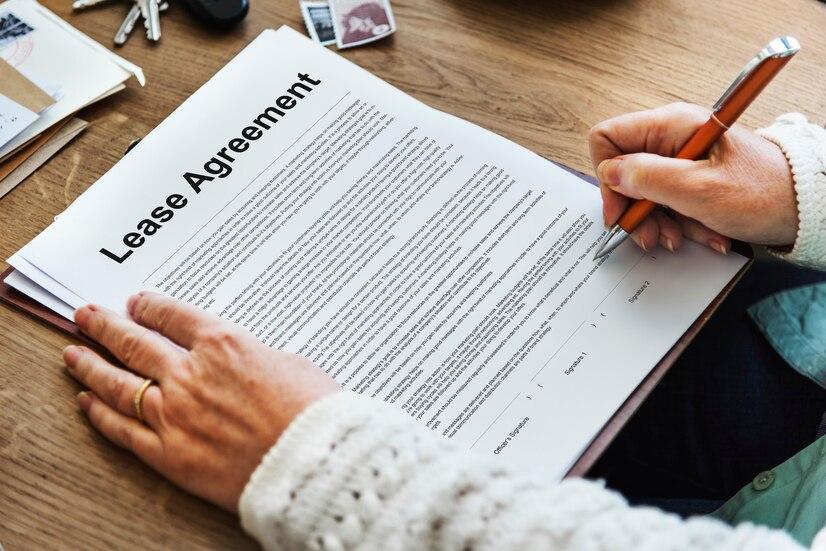



Table of Contents
- Introduction
- What is a Lease Deed?
- Format of a Lease Deed
- Important Clauses in a Lease Deed
- Process to Draft a Lease Deed
- Documents Required for Lease Deed Registration
- How is a Lease Deed Different from a Lease Agreement?
- Main Advantages of using a Lase Deed over a Lease Agreement
- Conclusion
- Faq's
Introduction
A lease deed is a critical legal document that formalises the relationship between a property owner (lessor) and a tenant (lessee) regarding the rental of property. It outlines the specific terms and conditions under which the lessee is granted the right to use and occupy the property for a predetermined period in exchange for rent. This document is essential for ensuring that both parties understand their rights and responsibilities, providing legal protection in the event of disputes.
The significance of a lease deed extends beyond merely documenting an agreement; it serves as a comprehensive reference point that delineates various aspects of the lease arrangement, including rent, duration, maintenance responsibilities, and termination conditions. By clearly defining these elements, a lease deed helps prevent misunderstandings and conflicts between landlords and tenants.
In this article, we will explore the format of a lease deed, highlight important clauses that should be included, and outline the process involved in drafting this essential document. Understanding these components is vital for both lessors and lessees to ensure a smooth rental experience and to safeguard their respective interests throughout the duration of the lease.

What is a Lease Deed?
A lease deed is a formal legal document that establishes the terms and conditions under which a property owner (the lessor) grants another party (the lessee) the right to use and occupy a property for a specified duration in exchange for rent. This document is crucial in defining the rights and obligations of both parties, thereby providing legal protection in case of disputes.
Format of a Lease Deed
A typical lease deed includes the following sections:
Title: The document should be clearly titled "Lease Deed" at the top.
Date of Agreement: The date on which the lease deed is executed should be mentioned.
Parties Involved: The lessor (landlord) and lessee (tenant) should be identified by stating their full names, addresses, and any relevant identification details, such as PAN numbers or Aadhaar numbers.
Property Description: A detailed description of the property being leased should be provided, including its address, survey numbers, plot numbers, and any specific identifiers like flat numbers or unit numbers. If the property is part of a larger building or complex, its location within the building should be specified.
Term of Lease: The duration of the lease should be clearly stated, including the start and end dates. If the lease is renewable, the terms of renewal should be outlined.
Rent Details: The amount of rent, payment frequency (monthly, quarterly, annually), due dates, and acceptable payment methods should be specified. Any rent escalation clauses or rent-free periods should also be mentioned.
Security Deposit: The amount of the security deposit, conditions for its return, and any deductions that may be made from the deposit should be outlined.
Use of Property: The permissible uses of the property (e.g., residential, commercial, or industrial) should be defined, along with any restrictions on use, such as prohibiting certain activities or subletting.
Maintenance Responsibilities: The responsibilities of the lessor and lessee for maintenance and repairs during the lease term should be clearly defined, including the frequency of maintenance and the party responsible for the cost of repairs.
Termination Clause: The conditions under which either party may terminate the lease early should be outlined, such as a breach of contract or a change in circumstances.
Governing Law: The jurisdiction whose laws will govern the lease agreement should be specified.
Signatures: Spaces should be provided for both parties to sign and date the document, along with spaces for witnesses to sign if required by law.
Important Clauses in a Lease Deed
Including specific clauses in a lease deed is crucial for protecting both parties' interests. Here are some essential clauses to consider:
Occupancy Details: The number of people allowed to occupy the property should be specified, along with any restrictions on subletting or guests.
Payment Terms: The rent amounts, due dates, acceptable payment methods, and penalties for late payments should be clearly stated to avoid disputes.
Maintenance and Repairs: Responsibilities for property maintenance and repairs should be defined to prevent disputes over property condition. This includes specifying who is responsible for routine maintenance tasks, such as cleaning common areas or maintaining the lawn.
Security Deposit Terms: The conditions under which the security deposit may be withheld or returned after tenancy ends should be detailed, such as deductions for damage or unpaid rent.
Use Restrictions: Clauses that restrict certain activities on the premises, such as smoking, keeping pets, or making unauthorized alterations, should be included.
Renewal Options: If the lease is renewable, the terms for renewal should be outlined, including any changes in rent or conditions.
Insurance Requirements: If the lessee is required to carry renter's insurance to cover personal property losses or liability, this should be specified.
Severability Clause: A severability clause ensures that if any part of the lease is found invalid, the remaining provisions remain enforceable.
Right to Enter: The circumstances under which the landlord may enter the property for inspections or repairs should be defined, such as providing advance notice to the tenant.
Dispute Resolution: The process for resolving disputes between the lessor and lessee should be outlined, such as mediation or arbitration.
Process to Draft a Lease Deed
Drafting a lease deed involves several steps:
Research Local Laws: It is essential to understand local landlord-tenant laws that may affect lease terms to ensure compliance. This includes laws related to security deposits, rent control, and tenant rights.
Gather Information: Collect all necessary information about both parties, property details, and specific terms agreed upon. This includes the full names, addresses, and contact information of the lessor and lessee, as well as the property address, size, and amenities.
Use a Template or Draft from Scratch: Consider using a legal template as a starting point or draft your own document based on specific needs. Many online resources provide sample lease deeds that can be customised to fit your requirements.
Include Essential Clauses: Ensure all critical clauses are included as discussed above to protect both parties' rights. Review the draft to ensure that all necessary information is included and that the language is clear and unambiguous.
Review by Legal Counsel: It is advisable to have a lawyer review the draft to ensure it meets legal standards and adequately protects your interests. A legal professional can also provide guidance on any local laws or regulations that may affect the lease agreement.
Finalise and Sign: Once both parties agree on terms and conditions, finalize the document by signing it in front of witnesses if required by law. Both the lessor and lessee should receive a copy of the signed lease deed for their records.
Register the Lease Deed: In some jurisdictions, it is mandatory to register the lease deed with the local authorities. This process involves paying a registration fee and submitting the deed for official recording.
Distribute Copies: Provide copies of the signed and registered lease deed to all parties involved for their records.
Documents Required for Lease Deed Registration
 Documents required for Lease Deed Registration
Documents required for Lease Deed Registration
Identity Proof:
- Aadhaar Card
- Driving License
- Passport
- Any other government-issued identification for both the landlord and tenant.
Address Proof:
- Recent utility bills
- Voter ID
- Bank statements
- Any official document that verifies the address of both parties.
Passport-sized Photographs:
- Recent color photographs of the authorized signatories from both parties.
Company Documents (if applicable):
- Company PAN card and company seal/stamp if the property is being leased for commercial purposes.
Proof of Ownership:
- Original title deed or ownership documents of the property being leased.
- Any relevant documentation that establishes the lessor's right to lease the property.
Property Documents:
- Index II or tax receipt of the property to be leased.
- Any other relevant property documents that may be required by local authorities.
Route Map:
- A route map indicating the location of the leased property, especially if it is part of a larger complex or building.
Additional Considerations
- Ensure that all documents are current and accurately represent both parties' identities and addresses.
- It is advisable to consult with a legal professional to confirm that all necessary documentation is prepared and compliant with local regulations before proceeding with registration.
- The registration must typically be done at least four months before the expiration date of the lease deed to avoid complications.
Having these documents ready will facilitate a smooth registration process, ensuring that both parties are legally protected throughout their rental relationship.
How is a Lease Deed Different from a Lease Agreement?

Definition
Lease Deed: A lease deed is a formal, legally binding document that transfers the rights to use and occupy a property from the lessor (landlord) to the lessee (tenant) for a specified duration in exchange for rent. It is typically executed on stamp paper and must be registered with the appropriate authority to be legally valid.
Lease Agreement: A lease agreement is a broader term that refers to any contract outlining the terms and conditions of a rental arrangement between a landlord and tenant. This document may or may not be registered, and it can be either written or oral.
Legal Nature
Lease Deed: Lease deeds have a permanent legal status and are required to be executed on stamp paper. They must be registered under the applicable registration laws, providing them with full legal enforceability.
Lease Agreement: Lease agreements can vary in formality; they may be informal or formal. Their legal standing depends on whether they are written, executed on stamp paper, and registered. Unregistered agreements may have limited enforceability.
Transfer of Rights
Lease Deed: A lease deed transfers possession rights of the property to the lessee for the duration of the lease, granting them full control over the property during that period.
Lease Agreement: A lease agreement allows the lessee to use and occupy the property without transferring ownership rights. The ownership remains with the lessor throughout the lease term.
Registration Requirements
Lease Deed: Registration is mandatory for lease deeds as per local laws (e.g., Indian Registration Act) when the lease period exceeds 11 months. This registration helps prevent disputes and ensures admissibility in court.
Lease Agreement: Registration of lease agreements is not always mandatory; it depends on state laws and the duration of the lease. While registration offers additional legal protection, unregistered agreements can still be valid under certain conditions.
Stamp Duty
Lease Deed: Lease deeds attract stamp duty based on their duration and value, which varies by jurisdiction.
Lease Agreement: Lease agreements may or may not incur stamp duty, depending on local regulations. Unstamped agreements might have limited evidentiary value in legal proceedings.
Applicability
Lease Deed: Typically used for long-term leases (usually exceeding 11 months), providing more security and legal protection for both parties involved.
Lease Agreement: Commonly used for short-term leases (11 months or less), offering flexibility and simplicity for shorter durations.
While both lease deeds and lease agreements serve to outline rental arrangements, a lease deed is a more formal document that provides greater legal security and clarity regarding property rights, making it suitable for long-term leases. In contrast, a lease agreement can be more flexible and informal but may lack some of the protections afforded by a registered lease deed.
Main Advantages of using a Lase Deed over a Lease Agreement
1. Legal Protection
A lease deed provides stronger legal protection for both parties involved. It is a formal document that must be executed on stamp paper and registered with the appropriate authorities, making it legally binding. This ensures that the rights and obligations of both the lessor and lessee are clearly defined and protected under law.
2. Clarity of Terms
Lease deeds typically include comprehensive details about the terms of the lease, such as rent amount, payment schedule, duration of the lease, maintenance responsibilities, and conditions for termination. This level of detail helps prevent misunderstandings and disputes that may arise due to ambiguous terms.
3. Transfer of Rights
A lease deed transfers possession rights of the property to the lessee for the duration of the lease. This means that the lessee has full control over the property during this period, which is not always the case with a lease agreement where ownership remains with the lessor.
4. Mandatory Registration
Lease deeds must be registered as per local laws (e.g., Indian Registration Act), which provides additional legal validity. A registered lease deed serves as conclusive proof of the existence and terms of the lease, making it easier to enforce in court if necessary.
5. Long-Term Security
Lease deeds are generally used for longer-term leases (typically exceeding 11 months), providing more security for both parties. For landlords, this means guaranteed rental income for a longer duration; for tenants, it ensures stability in their living or business arrangements without sudden changes.
6. Admissibility in Court
In case of disputes, a registered lease deed is admissible as evidence in court, whereas an unregistered lease agreement may not hold the same weight. This makes it easier to resolve conflicts legally and assert rights over the property.
7. Higher Credibility
Having a formal lease deed enhances credibility for both parties. It demonstrates professionalism and seriousness in the leasing arrangement, which can be particularly important in commercial transactions.
8. Protection Against Arbitrary Changes
A well-drafted lease deed protects tenants from arbitrary eviction or changes in lease conditions by landlords. It establishes clear guidelines on what constitutes acceptable behavior from both parties throughout the lease term.
Opting for a lease deed instead of a simple lease agreement provides significant advantages in terms of legal protection, clarity, enforceability, and security for both landlords and tenants. These benefits make it a preferred choice for long-term leasing arrangements where clear rights and obligations are essential to avoid potential disputes.
Conclusion
A well-drafted lease deed is vital for establishing clear expectations between landlords and tenants while minimising potential disputes. By understanding its format, key clauses, and drafting process, both parties can ensure that their rights are protected throughout the duration of their rental relationship. It is essential to consult with a legal professional to ensure that the lease deed complies with all applicable laws and regulations.
explore further
Latest from Home Buying Tips
More from Recommendations
Resources
Dwello, for every home buyer, is a way to go from 'I feel' to 'I know', at no extra cost.




